As Goa gears up to host the Delphic Games for a fortnight from February 1, 2016, it is one more in the state's calendar of events aiming to keep the tourists coming
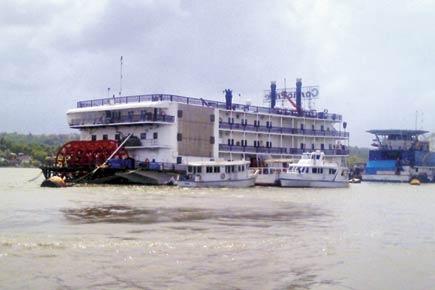
Come February 2016, Goa is scheduled to host the Vth Youth Delphic Games, the biggest event to be held in the land of sand, sea and surf. If successful, then Goa will probably start being viewed through another prism, that of art and culture.
ADVERTISEMENT
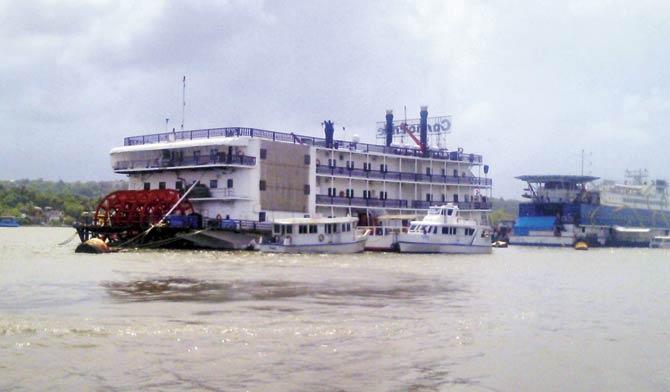
The floating casinos in Goa
What the Delphic Games essentially are is a global competition with their focus on art and culture — artistes from across the world will compete in music, theatre, painting, performing arts. The competition is divided into six broad categories like, musical arts and sounds, performing arts, language arts, visual arts, social arts and ecological arts and architecture.
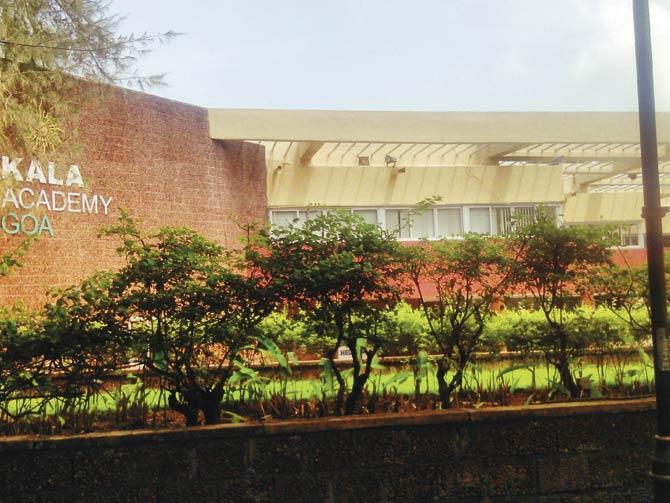
The Charles Correa-designed Kala Academy in Panjim, the premier art and culture venue in Goa
“The Games will attract 7,000 participants from the age of 15 to 25, from 125 countries in six art categories and around 70 sub-categories, spanning two weeks from February 1 to February 14.
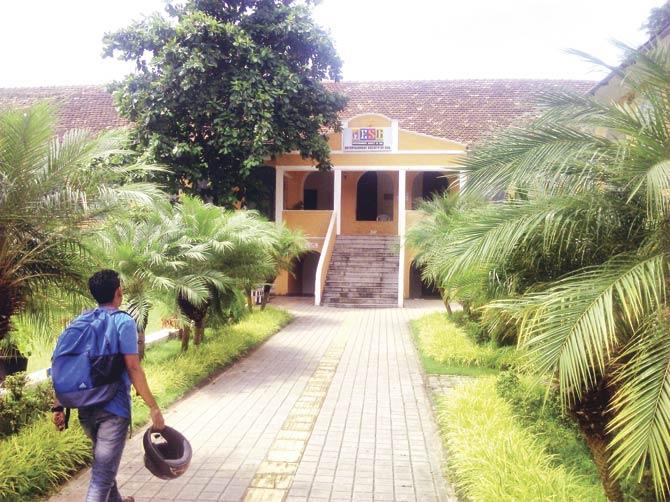
Entertainment Society of Goa (ESG) headquarters at old Maquinez Palace in Panjim
The Delphic Games are to art and culture what the Olympic Games are to physical sports. They are the largest common floor for art and culture in the world, as Olympics Games are the largest common floor for sports.” say organisers.
Befuddled
The average Goan is quite bewildered with the constantly changing images of Goa. It changes from Portuguese colony to Indian state, from a niche haunt of hippies to a saturated destination of tourists, from an idyllic haven to being described as the ‘Thailand of India’ (with an apparently thriving underground sex industry).
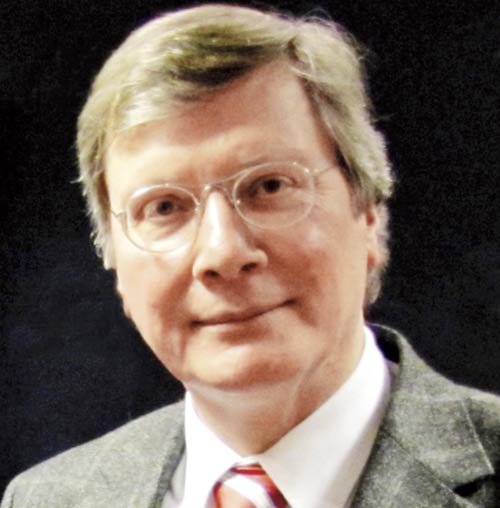
J Christian B Kirsch
Put a ear to the ground and one can discern an undercurrent of resentment about how Goa has become a hub of casinos, seen as promoting gambling and a culture of hedonism and licentiousness. Even the International Film Festival of India (IFFI) was first opposed by many, but has now come to be accepted as part of the Goan roundabout.
Many were left flabbergasted with the thunderous roar of thousands of Harley Davidson motorbikes in a bike rally during the India Bike Week in January this year.
Numbers
Over the last two decades, successive Goa governments have been trying to attract more tourists to the state. In came casinos nearly two decades ago, and in 2004 a decisive move was made when Goa became the permanent venue for the IFFI, the biggest film festival in the country.
Since then, many modern festivals have been added to the calendar, with the season-ending Sunburn music festival in the last days of December every year. Besides half a dozen major music festivals, there are many more film festivals, yoga festivals, bike festivals and so on.
Two years ago, Goa even hosted the Lusofonia Games, the equivalent of the Commonwealth Games for former colonies of Portugal. This is being done because of demands from the tourism industry. Huge resorts and hotel rooms and the emergence of the tourism industry as the single biggest industry in Goa is the reason for these attempts at keeping the people coming.
The off and on holiday crowd which peaks during some months and then dips at other times, is simply not enough to keep massive hotels and resorts up and running and to keep people employed. So ways had to be found to keep the footfalls coming all through the year, and the only way to do that is to go the way of Las Vegas.
Profile
There have also been sporadic attempts to convert Goa into a kind of artistic-intellectual hub. The Goa government, for example, hosts the DD Kosambi Festival of Ideas every year at the Kala Academy where eminent thinkers and such are invited to give talks. There have been other attempts like the Goa Arts and Literary Festival, which was not quite successful.
Venue
J Christian B Kirsch, founder of the worldwide Delphic movement, founder and secretary general of the International Delphic Council, says this about Goa as a venue for the Games, “The swaying palms, the white sands and sparkling water, the three essential elements that attract close to two million visitors every year to Goa’s balmy shore are plentiful in this tiny, glorious slice of India.
Goa is a true melting pot of culture, a place that we find incredibly fascinating, which is why we chose it for the Games. There are so many elements that are thrown together. Of course there is the vibrancy and the noise that you expect from India, but there is an element of Latin America and the Mediterranean warmth which makes it so amazing.
It is not just the architecture that carries an echo of Goa’s past, but the local cuisine is also an interesting fusion of spice and ingredients like palm, coconut and chillies, there still is, even now, an element of Portuguese cooking.” Unlike most of the other festivals in Goa including the IFFI which are held at only one or two venues, the Delphic Youth Games promises to engage much more of Goa.
Says Pankaj Kothari, spokesperson for the organising committee, “Rajeev Sethi, South Asia's leading art curator has done a venue recce of Goa and has short listed venues which can be brought up to artistic standards. We have approached open and closed stadiums, open and closed auditoriums, public spaces and parks, historical churches and monuments, beaches, public squares, University of Goa, colleges and schools, community centres, villages in Goa.”
The Games are going to be all over Goa, though the action is likely to be more in the touristy coastal areas. The main action is likely to be in Panjim, the capital city, which hosts the IFFI, and boasts of the Charles Correa-designed Kala Academy located on the banks of the Mandovi river, which has five floating casinos nearby.
Many IFFI events are also held in an old Portuguese-era building which now houses the Entertainment Society of Goa (which was also set up in 2005). According to Goa’s tourism department, “Chief Minister Laxmikant Parsekar’s vision is to enhance Goa’s image as a cultural and tourism destination. Goa is inviting artistic youth across the world to participate under the motto ‘Many Expressions, One Spirit’.”
Tourists
Ralph DeSouza, spokesperson for the Travel and Tourism Association of Goa (TTAG), says, “The Delphic Games will have a very positive impact on Goa. The publicity for the games and the international connectivity that it now has, will work together to increase the number of foreign visitors coming into Goa.
The hosting of the Games will not be ‘a one-time’ benefit with the influx of visitors just in February 2016 but impact the flow for years, as Goa will be recognised as a place with a wealth of culture and unique inventory of heritage, chosen to host the Delphic Games.”
There have also been instances when some mega festivals have been cancelled at the very last minute despite there being elaborate preparations, due to permissions not being given. That is because of the fierce competition between different festival organisers to get the best dates and places for their own festivals in Goa, the rivalry between Supersonic and Sunburn being a classic example.
While Sunburn used to be held in Candolim, the organisers of Supersonic managed to get the beachside property where the festival is held in 2013, forcing Sunburn to move further north to Vagator.
The Calangute-Candolim area is preferred for big music festivals because of the large number of hotel rooms available for the fans who can then party without having to worry about commuting long distances.
It is going to be interesting to see how the Delphic Games score on these factors.
 Subscribe today by clicking the link and stay updated with the latest news!" Click here!
Subscribe today by clicking the link and stay updated with the latest news!" Click here!






